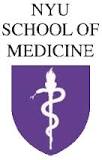The Oral Microbiome and Upper Aerodigestive Squamous Cell Cancer
| Status: | Completed |
|---|---|
| Conditions: | Cancer, Cancer |
| Therapuetic Areas: | Oncology |
| Healthy: | No |
| Age Range: | 40 - 92 |
| Updated: | 10/11/2017 |
| Start Date: | December 1, 1992 |
| End Date: | December 1, 2010 |
The human oral cavity is a diverse habitat that contains approximately 700 prokaryotic
species. The oral microbiome is comprised of 44% named species, 12% isolates representing
unnamed species, and 44% phylotypes known only from 16S rRNA based cloning studies
(http://www.homd.org/). Species from 11 phyla have been identified: Firmicutes,
Bacteroidetes, Proteobacteria, Actinobacteria, Spirochaetes, Fusobacteria, TM7,
Synergistetes, Chlamydiae, Chloroflexi and SR1 (http://www.homd.org/). Because these
observations have been mainly based on data generated from traditional Sanger sequencing, the
diversity of oral microbiome is highly likely underestimated. Application of high throughput
sequencing to the oral microbiome similar to the scale of the microbiome studies of other
body sites (GI tract, skin, and vagina) under the Human Microbiome Project is necessary to
obtain data essential for understanding the diversity and community structure of the oral
microbiome in health and disease.
species. The oral microbiome is comprised of 44% named species, 12% isolates representing
unnamed species, and 44% phylotypes known only from 16S rRNA based cloning studies
(http://www.homd.org/). Species from 11 phyla have been identified: Firmicutes,
Bacteroidetes, Proteobacteria, Actinobacteria, Spirochaetes, Fusobacteria, TM7,
Synergistetes, Chlamydiae, Chloroflexi and SR1 (http://www.homd.org/). Because these
observations have been mainly based on data generated from traditional Sanger sequencing, the
diversity of oral microbiome is highly likely underestimated. Application of high throughput
sequencing to the oral microbiome similar to the scale of the microbiome studies of other
body sites (GI tract, skin, and vagina) under the Human Microbiome Project is necessary to
obtain data essential for understanding the diversity and community structure of the oral
microbiome in health and disease.
The Prostate, Lung, Colorectal and Ovarian (PLCO) Cancer Screening Trial and The American
Cancer Society Cancer Prevention Study II (CPS-II) investigators have identified 140 UADSCC
cases that have been frequency matched 3:1 (420 controls) by incidence density sampling for
study (ACS. PLCO), gender, ethnic background, and age, within 10 years.
Cancer Society Cancer Prevention Study II (CPS-II) investigators have identified 140 UADSCC
cases that have been frequency matched 3:1 (420 controls) by incidence density sampling for
study (ACS. PLCO), gender, ethnic background, and age, within 10 years.
Inclusion Criteria:
- Diagnosis of Upper Aerodigestive Squamous Cell Cancer and registered in:
- The American Cancer Society Cancer Prevention Study II (CPS-II)
- The Prostate, Lung, Colorectal and Ovarian (PLCO) Cancer Screening Trial.
We found this trial at
1
site
New York University School of Medicine NYU School of Medicine has a proud history that...
Click here to add this to my saved trials
